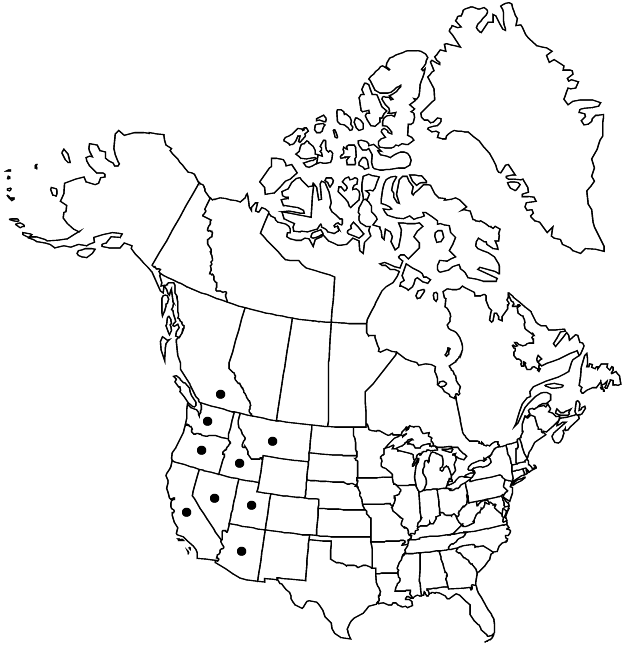Difference between revisions of "Stellaria nitens"
in J. Torrey and A. Gray, Fl. N. Amer. 1: 185. 1838.
FNA>Volume Importer |
imported>Volume Importer |
||
| (One intermediate revision by the same user not shown) | |||
| Line 1: | Line 1: | ||
{{Treatment/ID | {{Treatment/ID | ||
|accepted_name=Stellaria nitens | |accepted_name=Stellaria nitens | ||
| − | |accepted_authority=Nuttall | + | |accepted_authority=Nuttall |
|publications={{Treatment/Publication | |publications={{Treatment/Publication | ||
|title=in J. Torrey and A. Gray, Fl. N. Amer. | |title=in J. Torrey and A. Gray, Fl. N. Amer. | ||
| Line 8: | Line 8: | ||
}} | }} | ||
|common_names=Shining starwort | |common_names=Shining starwort | ||
| + | |special_status={{Treatment/ID/Special_status | ||
| + | |code=E | ||
| + | |label=Endemic | ||
| + | }} | ||
|basionyms= | |basionyms= | ||
|synonyms={{Treatment/ID/Synonym | |synonyms={{Treatment/ID/Synonym | ||
| Line 36: | Line 40: | ||
-->{{#Taxon: | -->{{#Taxon: | ||
name=Stellaria nitens | name=Stellaria nitens | ||
| − | |authority=Nuttall | + | |authority=Nuttall |
|rank=species | |rank=species | ||
|parent rank=genus | |parent rank=genus | ||
| Line 49: | Line 53: | ||
|publication title=in J. Torrey and A. Gray, Fl. N. Amer. | |publication title=in J. Torrey and A. Gray, Fl. N. Amer. | ||
|publication year=1838 | |publication year=1838 | ||
| − | |special status= | + | |special status=Endemic |
| − | |source xml=https:// | + | |source xml=https://bitbucket.org/aafc-mbb/fna-data-curation/src/2e0870ddd59836b60bcf96646a41e87ea5a5943a/coarse_grained_fna_xml/V5/V5_229.xml |
|subfamily=Caryophyllaceae subfam. Alsinoideae | |subfamily=Caryophyllaceae subfam. Alsinoideae | ||
|genus=Stellaria | |genus=Stellaria | ||
Latest revision as of 22:09, 5 November 2020
Plants annual, from threadlike taproots. Stems erect, sparingly branched below inflorescence, 4-sided, 3–25 cm, glabrous or sparsely hairy. Leaves sessile, crowded at base, shiny; blade oblanceolate to obovate and spatulate (proximal) or linear-lanceolate (distal), 0.5–1.5 cm × 0.5–2 mm, base round, apex acuminate, glabrous, often ciliate on margins. Inflorescences terminal, 3–21-flowered (rarely more) cymes; bracts linear-lanceolate, 1–12 mm, scarious distally, herbaceous proximally, often ciliate on margins. Pedicels ascending to erect, ± straight in fruit, 2–25 mm, glabrous. Flowers 2–3 mm diam.; sepals 5, with 3 prominent, ridged veins, very narrowly lanceolate, to acicular, 2.8–4.2 mm, margins wide, scarious, apex acuminate, glabrous; petals 5 or absent, 1–3 mm, shorter than sepals, blade apex 2-lobed; stamens 3–5; styles 3, spreading, becoming curled, ca. 0.3 mm. Capsules green or straw colored, narrowly ovoid, 2–3 mm, shorter than sepals, apex obtuse, opening by 3 valves, splitting into 6; carpophore absent. Seeds brown, round, 0.5–0.7 mm diam., minutely tuberculate. 2n = 20, 40.
Phenology: Flowering spring.
Habitat: Dry, open habitats: sand dunes, stream banks, rocky outcrops, open woodlands, beneath boulders, disturbed areas
Elevation: 0-2000 m
Distribution

B.C., Ariz., Calif., Idaho, Mont., Nev., Oreg., Utah, Wash.
Discussion
Selected References
None.